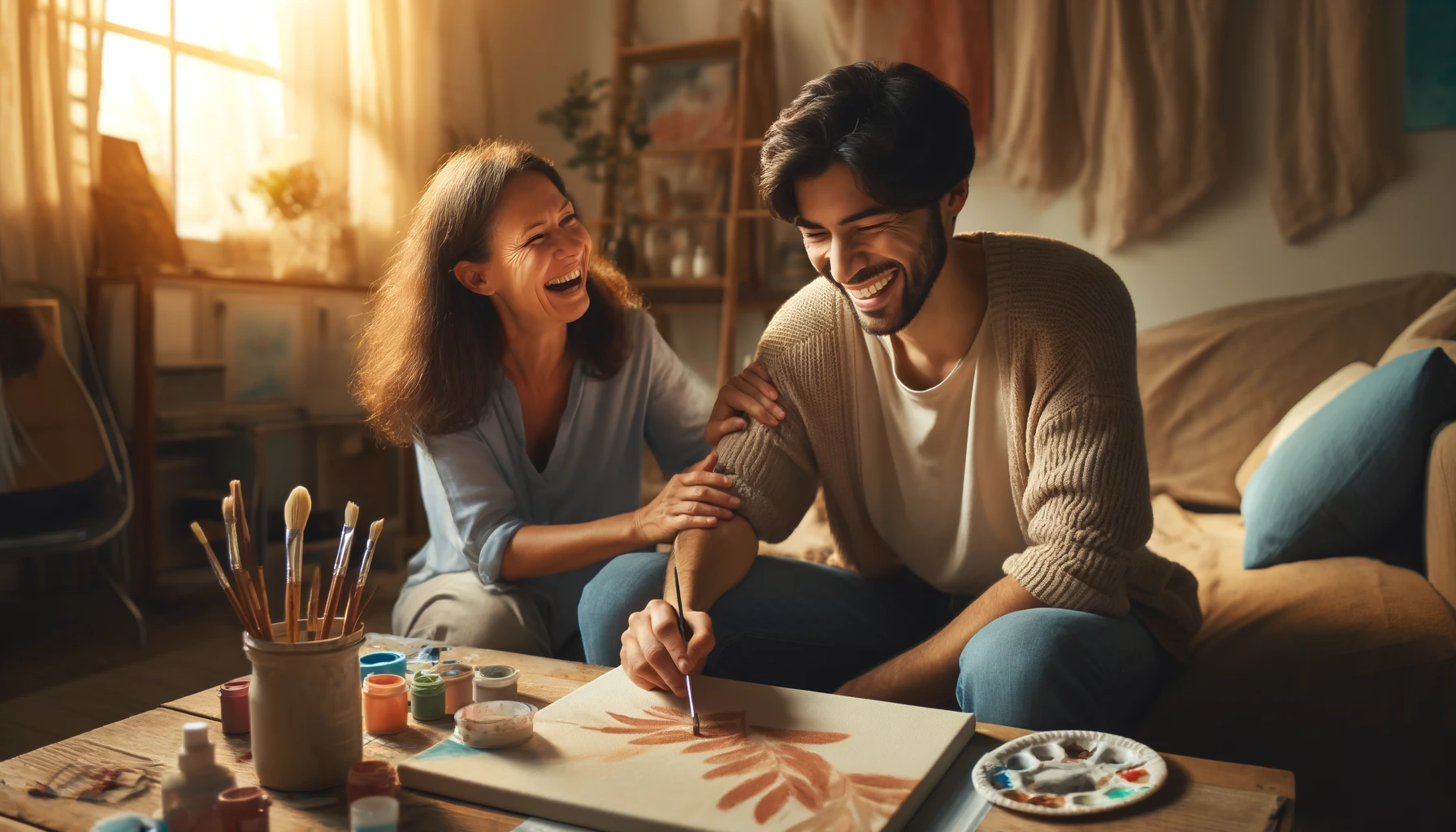Art therapy offers a unique approach to mental health treatment, providing a creative outlet for expression and emotional healing. It is a method where individuals utilise art-making within a therapeutic environment, facilitated by a professional art therapist. In the UK, where mental health awareness is increasingly prioritised, art therapy has grown in significance, recognised both as a therapeutic intervention for those with mental health issues and as a preventative tool for enhancing overall wellbeing.
Understanding Art Therapy
Art therapy employs creative techniques such as drawing, painting, collage, colouring, or sculpting to help individuals express themselves artistically and explore the psychological and emotional undertones in their art. According to the British Association of Art Therapists, art therapy is grounded in the belief that creative expression can foster healing and mental well-being. It integrates psychological theories with the creative process, offering a non-traditional pathway to explore personal issues and conflicts. Art therapy can be particularly impactful for those who experience difficulty expressing themselves verbally, providing an alternative means to communicate and understand complex feelings and thoughts.
Emotional Expression and Management
Art therapy is an effective mode for expressing and confronting deep-seated emotions in a non-verbal manner. This approach is especially beneficial for individuals dealing with trauma, anxiety, or depression, as it allows them to externalise and visually process emotions that may be too difficult to articulate with words. For many, seeing their emotions represented visually can make them more tangible and easier to understand, which is a critical step in the healing process. Moreover, art therapy provides a controlled environment where emotions can be explored safely, with the guidance of a therapist, which helps prevent individuals from feeling overwhelmed by their emotions during the process.
Stress Reduction
Engaging in art-making is inherently meditative and can act as a significant distraction from daily stressors. Research has shown that art therapy can lower cortisol levels, which are indicative of stress, thereby reducing symptoms of anxiety and contributing to a more relaxed state of mind. This form of therapy promotes mindfulness, which involves focusing on the present moment and appreciating the process of creation, regardless of the outcome. Such mindfulness in art-making encourages individuals to let go of stress and immerse themselves in the flow of creativity, often leading to profound relaxation and stress relief.
Self-Esteem and Identity
Art therapy can greatly enhance self-esteem and self-awareness by providing a tangible sense of accomplishment through the completion of artwork. This is particularly significant for those who struggle with self-esteem or identity issues, as the creation process reaffirms their capabilities and worth outside of their mental health challenges. Additionally, art therapy allows individuals to explore various aspects of their identity in a concrete way, offering opportunities to express and reflect on personal values, struggles, and strengths. This exploration can lead to a stronger sense of self and a reconnection with neglected or suppressed aspects of one’s identity.
Social Connection
Many art therapy sessions are conducted in group settings, which facilitates social interaction and community building. This group dynamic can be vital for individuals who feel isolated due to their mental health conditions. The shared experience of creating art in a therapeutic setting helps build connections with others who may have similar experiences, fostering a sense of belonging and mutual support. Moreover, group art therapy provides a platform for individuals to share their art and personal stories in a supportive environment, enhancing their social skills and reducing feelings of loneliness.
Cognitive Benefits
The process of creating art stimulates cognitive functions by engaging a person’s attention, memory, and problem-solving skills. For older adults or those recovering from neurological disorders or injuries, art therapy can be an effective component of a broader therapeutic regimen, helping to maintain or improve cognitive function over time. It also encourages neural plasticity, which is the brain’s ability to reorganize itself by forming new neural connections. These connections can help compensate for injury or disease and adjust activities in response to new situations or changes in the environment.
Conclusion
Art therapy provides a rich tapestry of psychological, emotional, and cognitive benefits that make it a valuable tool in the realm of mental health treatment. Its holistic approach aligns well with contemporary wellness strategies in the UK, emphasising its relevance in today’s healthcare landscape. By fostering creative expression within a therapeutic context, art therapy not only aids in healing but also enriches the lives of individuals, giving them the tools to navigate their emotions and stresses more effectively.
For More Information
If you’re interested in learning more about how art therapy can benefit mental health, or if you wish to incorporate art therapy into your personal or professional wellness strategies, please contact us at Cat & Crow. We are dedicated to supporting your journey towards improved mental health and well-being through compassionate and innovative therapeutic methods.

